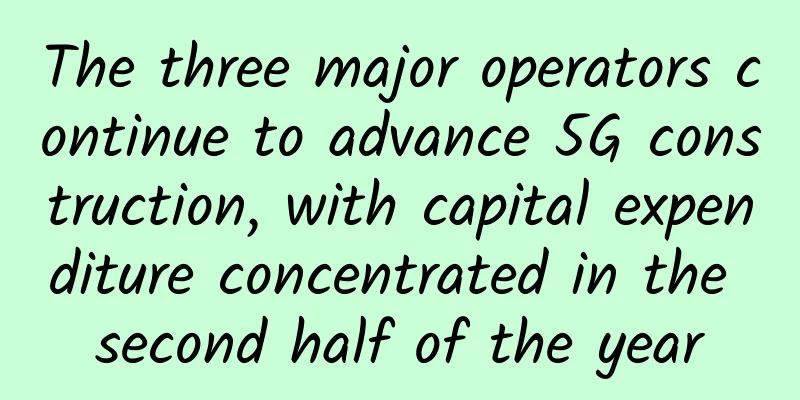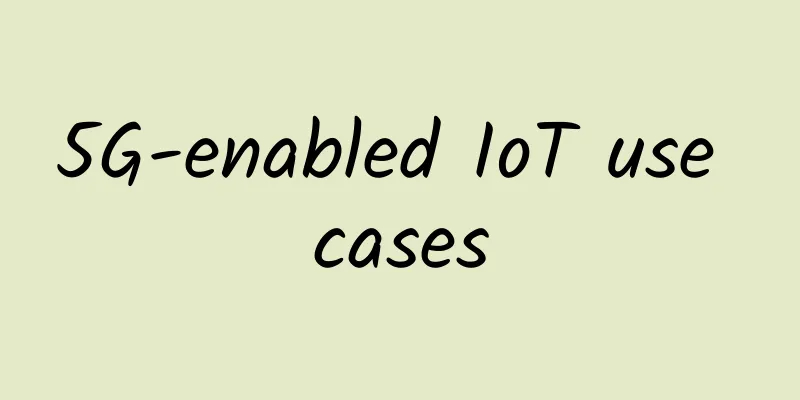Let’s talk about Sentinel Quick Start

|
This article is reprinted from the WeChat public account "Operation and Development Story", written by Lao Zheng. Please contact the WeChat public account "Operation and Development Story" to reprint this article. Introduction to SentinelWith the popularity of microservices, the stability between services is becoming more and more important. Sentinel takes traffic as the entry point and protects the stability of services from multiple dimensions such as traffic control, circuit breaking and degradation, and system load protection. Sentinel has the following features:
Key features of Sentinel: Sentinel's open source ecosystem: Sentinel is divided into two parts: The core library (Java client) does not depend on any framework/library and can run in all Java runtime environments. It also has good support for frameworks such as Dubbo/Spring Cloud. The Dashboard is developed based on Spring Boot and can be run directly after packaging without the need for additional application containers such as Tomcat. Comparison between Sentinel, Hystrix and resilience4j
Sentinel nounresource Resource is a key concept in Sentinel. It can be anything in a Java application, for example, a service provided by the application, or a service provided by another application called by the application, or even a piece of code. In the following documents, we will use resource to describe a code block. As long as the code is defined through the Sentinel API, it is a resource and can be protected by Sentinel. In most cases, you can use method signatures, URLs, or even service names as resource names to identify resources. rule The rules set around the real-time status of resources can include flow control rules, circuit breaker and degradation rules, and system protection rules. All rules can be adjusted dynamically in real time. Flow ControlWhat is flow control Traffic control is a common concept in network transmission, which is used to adjust the sending data of network packets. However, from the perspective of system stability, there are also many considerations in the speed of processing requests. Requests arriving at any time are often random and uncontrollable, and the processing capacity of the system is limited. We need to control the traffic according to the processing capacity of the system. Sentinel, as a dispatcher, can adjust random requests into a suitable shape as needed, as shown in the following figure: Flow Control Design Concept There are several angles for flow control:
Sentinel is designed to allow you to freely choose the angle of control and flexibly combine them to achieve the desired effect. Circuit BreakerWhat is circuit breaker downgrade In addition to flow control, one of Sentinel's missions is to promptly fuse unstable factors in the call link. Due to the complexity of the call relationship, if a resource in the call link becomes unstable, it may cause requests to pile up, leading to cascading errors. The principles of Sentinel and Hystrix are consistent: when a resource in the call chain is detected to be unstable, such as a long request response time or a high exception ratio, the call to this resource is restricted to make the request fail quickly to avoid affecting other resources and causing cascading failures. Circuit Breaker Design ConceptIn terms of restriction methods, Sentinel and Hystrix take completely different approaches. Hystrix isolates dependencies (corresponding to resources in Sentinel's concept) through thread pool isolation. The advantage of this is that resources are most thoroughly isolated from each other. The disadvantage is that in addition to increasing the cost of thread switching (too many thread pools lead to too many threads), it is also necessary to allocate thread pool sizes for each resource in advance. Sentinel takes two approaches to this problem:
Unlike resource pool isolation, Sentinel reduces the impact of unstable resources on other resources by limiting the number of concurrent threads of resources. This not only eliminates the loss of thread switching, but also does not require you to pre-allocate the size of the thread pool. When a resource becomes unstable, such as a longer response time, the direct impact on the resource is that the number of threads will gradually accumulate. When the number of threads accumulates to a certain number on a specific resource, new requests for the resource will be rejected. The accumulated threads will continue to receive requests only after completing their tasks.
In addition to controlling the number of concurrent threads, Sentinel can also quickly downgrade unstable resources by response time. When the response time of a dependent resource is too long, all access to the resource will be directly denied until the specified time window has passed. System adaptive protectionSentinel also provides adaptive protection capabilities at the system level. Preventing avalanches is an important part of system protection. When the system load is high, if requests continue to come in, the system may crash and become unresponsive. In a cluster environment, network load balancing will forward the traffic that should have been carried by this machine to other machines. If other machines are also in an edge state at this time, the increased traffic will cause this machine to crash as well, and eventually make the entire cluster unavailable. To address this situation, Sentinel provides a corresponding protection mechanism to achieve a balance between the system's ingress traffic and the system's load, ensuring that the system can process the most requests within its capabilities. Sentinel PrincipleThe main working mechanism of Sentinel is as follows:
Sentinel UsageGeneral use If the application uses a pom project, add the following code to the pom.xml file:
Next, we can surround the code that needs to control the flow with Sentinel API SphU.entry("HelloWorld") and entry.exit(). In the following example, we use System.out.println("hello world"); as a resource and surround it with API (embedded point). The reference code is as follows:
Next, use rules to specify the number of requests that are allowed to pass through the resource. For example, the following code defines that the resource HelloWorld can only pass a maximum of 20 requests per second.
After the demo is running, we can see the following output in the log ~/logs/csp/${appName}-metrics.log.xxx:
Where p represents the requests that passed, block represents the requests that were blocked, s represents the number of requests that were successfully executed, e represents the user-defined exceptions, and rt represents the average response time. As you can see, this program outputs "hello world" 20 times per second, which is the same as the threshold set in the rule. Annotation methodSentinel provides @SentinelResource annotation for defining resources, and provides AspectJ extensions for automatically defining resources, handling BlockException, etc. When using Sentinel Annotation AspectJ Extension, you need to introduce the following dependencies:
Example
@SentinelResource AnnotationNote: Annotation-based embedding does not support private methods. @SentinelResource is used to define resources and provide optional exception handling and fallback configuration items. The @SentinelResource annotation contains the following attributes:
Starting from version 1.8.0, defaultFallback supports configuration at the class level. Note: In versions prior to 1.6.0, the fallback function only handles degrade exceptions (DegradeException) and cannot handle business exceptions. In particular, if both blockHandler and fallback are configured, when a BlockException is thrown due to current limiting and downgrade, only the blockHandler processing logic will be entered. If blockHandler, fallback and defaultFallback are not configured, BlockException will be thrown directly when current limiting and downgrade (if the method itself does not define throws BlockException, it will be wrapped by JVM with a layer of UndeclaredThrowableException). Sentinel ConsoleDownload console program address:
Startup Command
Login account, the default login account and password are: sentinel After logging into the console, we can configure our services through the menu on the right refer to https://github.com/alibaba/Sentinel/wiki/Introduction https://github.com/NETFLIX/Hystrix/wiki/How-it-Works#benefits-of-thread-pools |
>>: An article on HTTP and TCP protocols
Recommend
When WiFi Master Key quietly takes away your password, do you really not mind?
Many Internet companies or products , in the name...
Interpretation of the "Three-Year Special Action Plan for Improving IPv6 Traffic (2021-2023)"
The large-scale deployment and application of IPv...
Aoyozhuji 20% off for all lines, US CN2/Hong Kong CN2/Germany CN2/Netherlands CN2/Hong Kong high-defense lines
Aoyozhuji is a long-established foreign VPS servi...
Sparks from blockchain and the Internet of Things
The Internet of Things is the application that is...
Why is 5G considered the criterion for the Internet of Things era?
With the advent of the 4G era, the Internet indus...
360 Wang Yangdong: IOT devices require all-round security protection, and every detail cannot be ignored
[51CTO.com original article] On December 1-2, 201...
How to understand 5G air interface (NR)?
The telecommunications industry certainly hopes t...
The Ultimate Guide to Ethernet Switch Ports: Identifying and Choosing the Right Port
Ethernet switch port types 1. Ethernet switch por...
A seminar on hypertension prevention and control was held, and Omron helped China to upgrade its hypertension management to a smart level
On December 5, 2019, the "To the Classic, Cr...
Justg: Russia CN2 GIA line VPS is online with annual payment starting from US$39.99
Last year, the blog shared the news of Justg'...
15,000 Stars! Programmer's "Internet Swiss Army Knife"!
Introduction CyberChef is a web application for e...
2017 Integrated Cabling Industry Analysis Report
1. Overview of the development of the integrated ...
From MPLS to the Internet: Enterprise Network Optimization in the New Era of WAN
There is no doubt that WANs look different than t...
Which router has the best wall penetration effect? Wireless router pit prevention guide
When buying a wireless router, the first thing to...






![[Black Friday] CloudCone: Los Angeles VPS from $16.79/year, Premium SC2 from $32.94/year](/upload/images/67cabff9214b9.webp)


